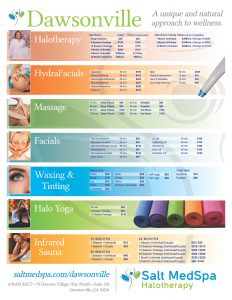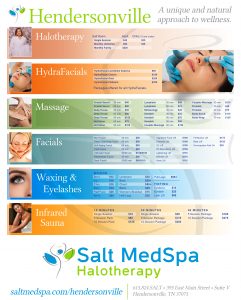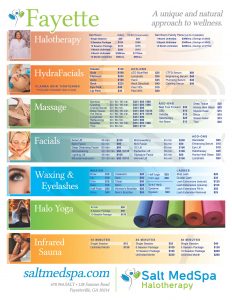Massage is a treatment that uses different kinds of physical contact to relax, revive and heal the body. Some types focus on soothing muscle pain; others on increasing energy levels; some aim to improve a specific physical condition; others simply to help you relax. Research shows that massage relieves stress-related problems, from anxiety and panic attacks, to asthma, constipation and high blood pressure. It is especially important for stroke and cancer patients and people with dementia.
Massages can be given while lying on a massage table, sitting in a massage chair, or lying on a mat on the floor depending on the type of massage requested. Your licensed, certified massage therapist will massage you with their bare hands, and possibly with their feet or elbows, using stroking, kneading, warming, and rolling movements to the skin and muscles.
Your therapist may use massage oil to make it easier to glide their hands across your skin. The strength of pressure will vary according to the massage-type and the parts of the body being massaged.Treatments can last from half an hour to 90 minutes, depending on what kind of massage you are having and what specific areas are being massaged.
Benefits of Massage
A relaxing day at the spa is a great way to unwind and de-stress. However, clients are sure to notice themselves feeling relaxed and at ease for days and even weeks after their appointments.
Loosening muscles and tendons allows increased blood flow throughout the body. Improving your circulation can have a number of positive effects on the rest of your body, including reduced fatigue and pain management.
Massage therapy is great for working out problem areas like lower back pain and chronic stiffness. Your therapist will be able to accurately target the source of your pain and help achieve the perfect massage regimen.
Massage encourages blood flow, which increases the amount of oxygen and nutrients that reach your organs and tissues. It stimulates deep circulation, both of blood and lymph which helps cleanse toxins and heal your body while boosting the immune system.
Massage therapy will loosen and relax your muscles, helping your body to achieve its full range of movement potential. It relaxes and refreshes tired or knotted muscles.
A massage will encourage relaxation and boost your mood. Going to bed with relaxed and loosened muscles promotes more restful sleep, and you’ll feel less tired in the morning.
Stimulation of the lymph nodes re-charges the body’s natural defense system.
Massage therapy is known to boost mood and promote better quality sleep, thus making you feel more rested and less worn-out at the end of the day.
Massage therapy can help to release endorphins in your body, helping you to feel happy, energized, and at ease.
A professional massage is a great way to safely deal with a sports injury or post-surgery rehabilitation. Massage can heal and prevent muscle or tissue damage and improve range of motion.
Helpful Hints
1.) Be as receptive and open to the massage process as possible.
2.) Don’t eat just before a massage session. Let your body digest your meal first.
3.) Be on time. If you arrive in a frenzied, rushed state, it may take longer to relax.
4.) Take off only as much clothing as you are comfortable removing. If you don’t want to remove your clothing, wear clothing that will be comfortable during the massage and will allow the massage therapist to touch and move the areas of your body you expect will need to be massaged.
Privacy – The therapist will either leave the room or otherwise provide privacy while you undress. A sheet or towel is provided for draping during the massage and the therapist will uncover only the part of your body being massaged, ensuring that modesty is respected at all times. After the massage is finished, you will be provided with privacy while dressing.
5.) Communicate with your massage therapist.
- Before the session, give accurate health information and let the massage therapist know your expectations and reasons for the massage.
- Allergies to oils, lotions, powders – The therapist may use oil, lotion or powders to reduce friction on your skin. If you are allergic to any oils, lotions or powders, tell your massage therapist, who can choose a substitute.
- Some people like to talk during a massage, while others remain silent. Tell your massage therapist what you prefer.
- During the massage session, report any discomfort, whether it’s from the massage or due to any problems or distractions related to the environment, e.g., room or bed temperature, music volume, lighting, etc.
- Give feedback to the massage therapist during the massage on the amount of pressure, speed of hand movement, etc. If anything happens that you dislike, you have the right to ask the massage therapist to stop.
6.) Remember to breathe normally. Breathing helps with relaxation. People often stop or limit their breathing when they feel anxious or a sensitive area is massaged.
7.) Relax your muscles and your mind. If you find your thoughts are racing during the massage, one way to be more body-centered and to quiet your mind is to follow the hands of the massage therapist and focus on how the touch feels.
8.) Drink extra water after your massage.
9.) Don’t get up too quickly and do allow for some open, quiet time after your massage session.
10.) Be prepared to schedule several massage sessions. Massage has its greatest benefits over time. The therapeutic effects of massage are cumulative, so the more often you get a massage, the better you will feel and the more quickly your body will respond. From one session to the next, relaxation deepens as the chronic patterns of stress in the body are affected and released. If you’re getting massage to address chronic muscular tension or recovery from a soft tissue injury, more than one session is usually needed.
11.) Use the sauna to improve your results. These can all help you relax before the treatment, so you’re able to release any lingering. muscle tension.





